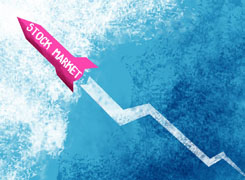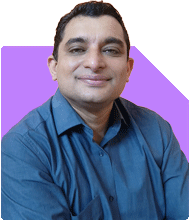Hi, I am 42 year old, I have capital of 50 lac. Where should I invest my money for next five years to get the best return?
Ans: Investing a capital of ?50 lakh for the next five years is a significant decision. At 42 years old, you're looking to optimize returns while managing risk effectively. Let’s explore various investment options that align with your goal of achieving the best returns over this period.
Understanding Your Investment Horizon and Risk Appetite
Five-Year Investment Horizon
A five-year period is relatively short in the investment world. While it’s longer than a typical short-term horizon, it’s not as extended as a long-term investment of 10-20 years. This timeframe allows for some exposure to equity but also necessitates a balance to mitigate risk.
Risk Tolerance
It’s essential to assess your risk tolerance. Given the relatively short horizon, a balanced approach with a mix of equity and debt would be prudent. This helps in capturing growth potential while safeguarding the capital.
Investment Options Overview
Equity Mutual Funds
Equity mutual funds are suitable for investors seeking high returns, albeit with higher risk. They invest in stocks and are ideal for growth over the medium to long term.
Large Cap Funds
Benefits: Invest in large, stable companies with a track record of steady returns. These are less volatile compared to mid and small-cap funds.
Suitability: Good for investors looking for moderate risk and reliable performance.
Mid Cap Funds
Benefits: Invest in medium-sized companies with higher growth potential. They offer higher returns than large cap funds but come with increased risk.
Suitability: Suitable for investors with a higher risk appetite looking for substantial growth.
Flexi Cap Funds
Benefits: These funds invest across all market capitalizations—large, mid, and small cap—allowing fund managers to optimize returns based on market conditions.
Suitability: Ideal for balanced growth and risk diversification.
Debt Mutual Funds
Debt mutual funds invest in fixed-income securities such as bonds and treasury bills. They provide stable and predictable returns with lower risk compared to equity funds.
Benefits
Stability: Lower risk and stable returns make debt funds a safe investment choice.
Liquidity: These funds are usually more liquid, allowing easier access to your money if needed.
Suitability
Debt funds are suitable for conservative investors looking to preserve capital and earn stable returns.
Hybrid Funds
Hybrid funds invest in both equity and debt instruments. They offer a balance between the growth potential of equities and the stability of debt.
Aggressive Hybrid Funds
Benefits: These funds have a higher allocation to equities (65-80%) and the rest in debt. They aim to provide higher returns while managing risk.
Suitability: Suitable for investors seeking a balanced approach with a tilt towards growth.
Balanced Advantage Funds
Benefits: These funds dynamically adjust the allocation between equity and debt based on market conditions. This flexibility can help in managing risk and optimizing returns.
Suitability: Ideal for investors looking for a balanced and flexible investment strategy.
Recommended Investment Strategy
Diversification
Diversification is key to managing risk and optimizing returns. By spreading your investment across different types of funds, you can balance risk and growth.
Suggested Allocation
Large Cap Fund: ?15 lakh
Mid Cap Fund: ?10 lakh
Flexi Cap Fund: ?10 lakh
Aggressive Hybrid Fund: ?10 lakh
Debt Fund: ?5 lakh
Regular Monitoring and Rebalancing
Regularly review your investment portfolio to ensure it aligns with your goals and market conditions. Rebalance as necessary to maintain your desired asset allocation.
Detailed Analysis of Fund Categories
Large Cap Funds
Stability and Performance
Large cap funds invest in established companies with a proven track record. These companies are usually leaders in their industries and offer stability and consistent returns.
Risk Assessment
Large cap funds are less volatile compared to mid and small cap funds, making them a safer option for conservative investors.
Mid Cap Funds
Growth Potential
Mid cap funds target companies in their growth phase. These companies have the potential to become large cap companies, offering higher growth opportunities.
Volatility Considerations
While mid cap funds offer higher returns, they also come with increased volatility. Investors should be prepared for short-term fluctuations.
Flexi Cap Funds
Diversification Benefits
Flexi cap funds provide the benefit of diversification across different market capitalizations. This allows fund managers to shift investments based on market conditions, potentially enhancing returns.
Flexibility
The ability to invest across all market caps provides flexibility to adapt to changing market scenarios, making these funds a versatile option.
Aggressive Hybrid Funds
Balanced Growth
Aggressive hybrid funds invest predominantly in equities while maintaining a portion in debt. This balance aims to capture equity growth while mitigating risk through debt.
Risk Management
The debt component helps in cushioning against market downturns, providing a more stable return profile compared to pure equity funds.
Debt Funds
Capital Preservation
Debt funds are ideal for preserving capital while earning stable returns. They invest in government securities, corporate bonds, and other fixed-income instruments.
Interest Rate Risk
While generally stable, debt funds can be affected by changes in interest rates. It’s important to choose funds with good credit quality to minimize risk.
Active Management vs Passive Management
Advantages of Actively Managed Funds
Professional Expertise
Actively managed funds benefit from the expertise of professional fund managers who make informed decisions to optimize returns.
Market Adaptation
Fund managers can adapt to market trends and economic changes, potentially outperforming passive index funds which follow a set index.
Risk Mitigation
Active fund managers can implement strategies to mitigate risks, such as diversifying across sectors or reallocating assets based on market conditions.
Disadvantages of Passive Funds (Index Funds)
Lack of Flexibility
Index funds follow a predefined index, limiting the ability to adapt to changing market conditions.
Lower Returns
While index funds offer lower fees, actively managed funds have the potential to outperform the market and deliver higher returns.
Conclusion
Investing ?50 lakh over the next five years requires a balanced approach to maximize returns while managing risk. A diversified portfolio with a mix of large cap, mid cap, flexi cap, aggressive hybrid, and debt funds can help achieve this goal. Regular monitoring and rebalancing of the portfolio will ensure it remains aligned with your financial objectives. Consulting with a Certified Financial Planner can provide personalized advice to optimize your investment strategy.
Best Regards,
K. Ramalingam, MBA, CFP,
Chief Financial Planner,
www.holisticinvestment.in































